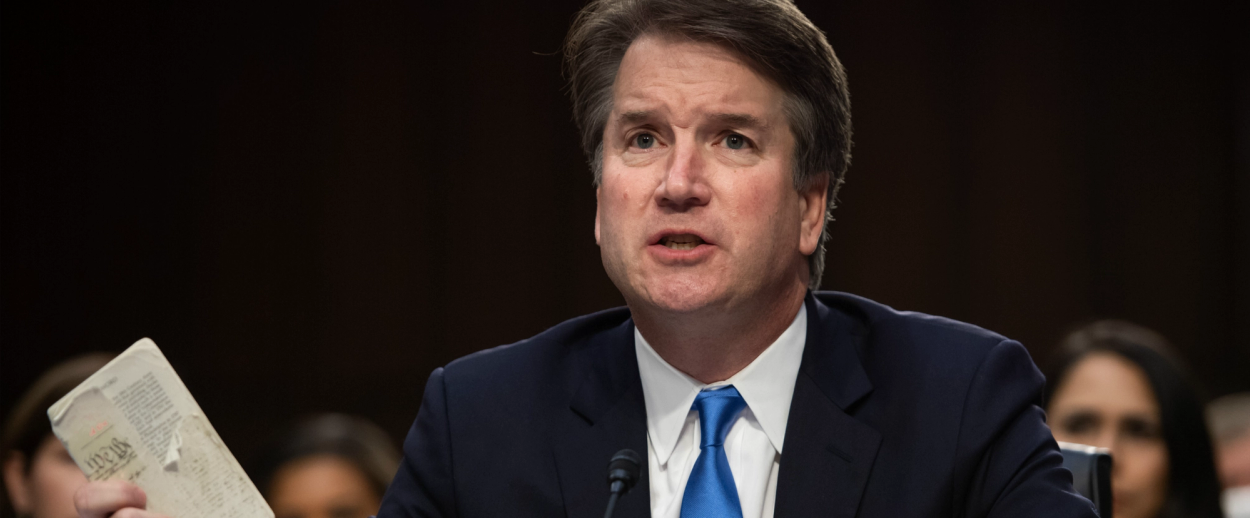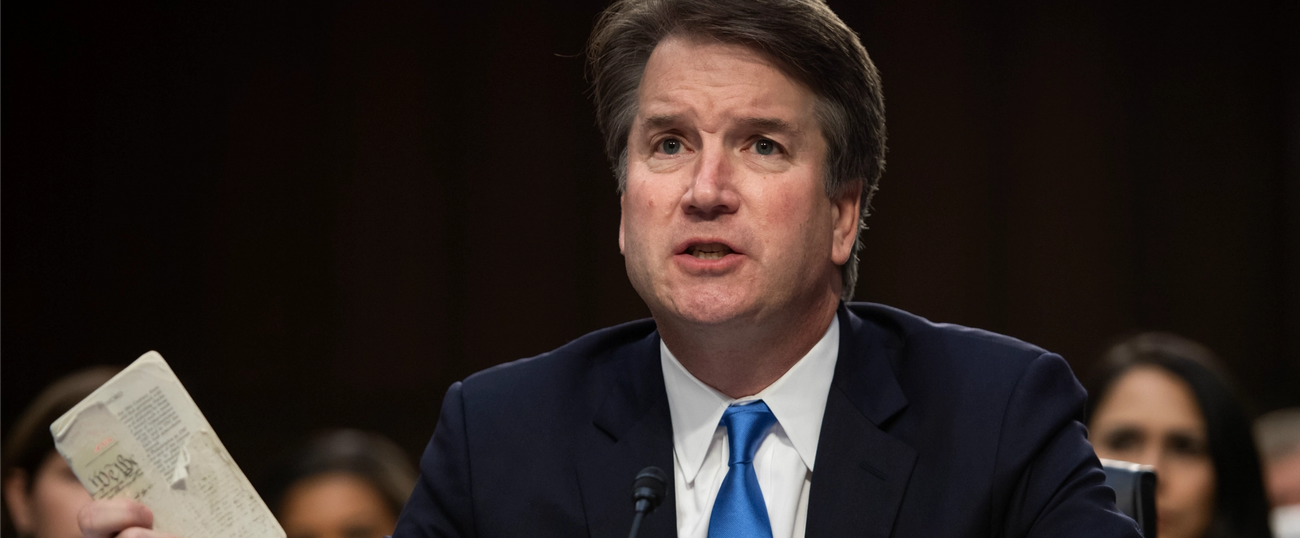The Dark History of Kavanaugh’s Ideas
How Brett Kavanaugh’s legal philosophy let the perpetrators of a massacre escape punishment and set the precedent for Jim Crow




“It is sometimes said that the Constitution is a document of majestic generalities,” Supreme Court nominee Brett Kavanaugh told the American Enterprise Institute in 2017. “As I see it, the Constitution is primarily a document of majestic specificity, and those specific words have meaning.”
These same sentiments were voiced by former Justice Antonin Scalia, and embody a judicial philosophy called textualism, which implies that there is one and only one correct interpretation of the language of the American Constitution. Its adherents, mainly conservative, see textualism as the only way to ensure that all Americans are treated equally under the law.
Critics, mostly liberal, decry this one-size-fits-all axiom as a smokescreen, merely a pretense to perpetuate a political agenda. They point out, for example, that the Constitution allows Congress to pass any law “necessary and proper”—hardly a majestically specific phrase—to execute the powers assigned to it.
The lives and welfare of millions of Americans will be impacted by the manner in which Supreme Court justices interpret constitutional language, and textualism does not have an encouraging history. Anyone with doubts needs only to recall the March 1876 ruling in the volatile case of United States v. Cruikshank.
Cruikshank stemmed from an incident on Easter Sunday, April 13, 1873, when upwards of 150 heavily armed white supremacists converged on Colfax, Louisiana. In the town, awaiting the invasion, were an equal number of black defenders, armed only with antiquated, barely functioning shotguns. The confrontation had been precipitated by a hopelessly corrupt gubernatorial election in which both the Republican, a carpetbagger, and the Democrat, a former Confederate officer, had been declared the winner. The issue was decided in the Republican-controlled courts, which ruled, predictably, for its party’s candidate.
When the shooting started, the outgunned black defenders almost immediately surrendered. After their weapons had been confiscated, the white invaders proceeded to slaughter them. As many as 100 African-American men were shot, stabbed or burned to death in the local courthouse.
The affair was dubbed either the Colfax Massacre or the Colfax Riot, depending on the political orientation of the speaker. Convinced that Louisiana would not respond aggressively, the federal government moved in. They used the 14th Amendment, which had been enacted expressly to protect the constitutional rights of black Americans. Since the invaders could not be tried for murder, which was solely a state crime, the government charged 98 of the whites with depriving the African-American men of their First Amendment right of free assembly. Only three were convicted, one of them Cruikshank, and eventually their appeal reached the Supreme Court.
In his opinion, Chief Justice Morrison Waite insisted that because the 14th Amendment read “nor shall any State deprive any person of life, liberty, or property, without due process of law; nor deny to any person within its jurisdiction the equal protection of the laws,” it did not apply to private individuals such as the Colfax defendants. Only the state could prosecute the white invaders, and if the state chose not to pursue those who had shot, stabbed, and burned to death their fellow citizens, the federal government was powerless to intervene. The convictions were reversed, Louisiana did nothing, and so, for one of the most heinous mass murders in American history, not a single person was punished.
Cruikshank also took aim at the 15th Amendment, which guaranteed that the right to vote “shall not be denied or abridged … on account of race, color, or previous condition of servitude.” In his circuit court opinion, Associate Justice Joseph Bradley, again using a textual interpretation, wrote that the amendment “confers no right to vote. That is the exclusive prerogative of the states. It does confer a right not to be excluded from voting by reason of race, color or previous condition of servitude, and this is all the right that Congress can enforce.”
Bradley’s pivot changed the amendment entirely. It transferred the burden of proof from the government to demonstrate that it had not denied the right to vote on account of race to the person denied to proving it had. That bar, as the Supreme Court demonstrated in subsequent decisions, was impossibly high. In the coming decades, African-Americans were virtually eliminated from voting rolls throughout the South.
In eviscerating two of the three post-Civil War amendments, the textualist opinions in Cruikshank set into motion the process that would create Jim Crow and doom millions of black American citizens to a century of slavery in all but name.
As the confirmation of Judge Kavanaugh proceeds to a vote, then, Americans need to consider whether the Constitution should be merely language, or rather a reflection of ideals of fairness and fundamental justice. This is not to say that language has no place. It is one of the law’s basic tools. But tools must be used for the purpose for which they were intended. If employed otherwise, there is every possibility that they can destroy the very thing they were designed to help create.
Lawrence Goldstone is the author of three books and numerous articles on Constitutional Law. His first book on the subject for middle and high school students, Unpunished Murder: Massacre at Colfax and the Quest for Justice, has just been published by Scholastic.